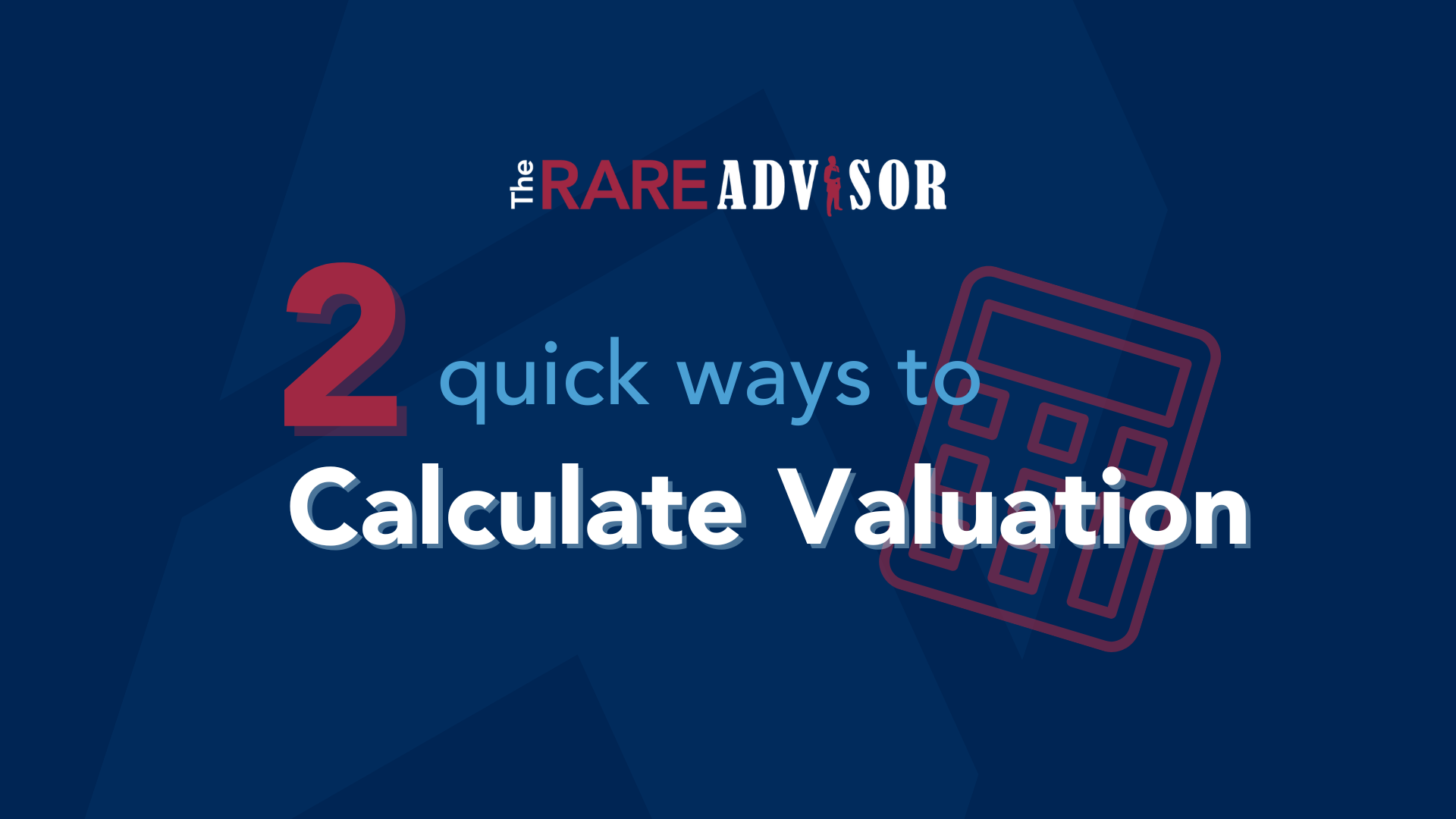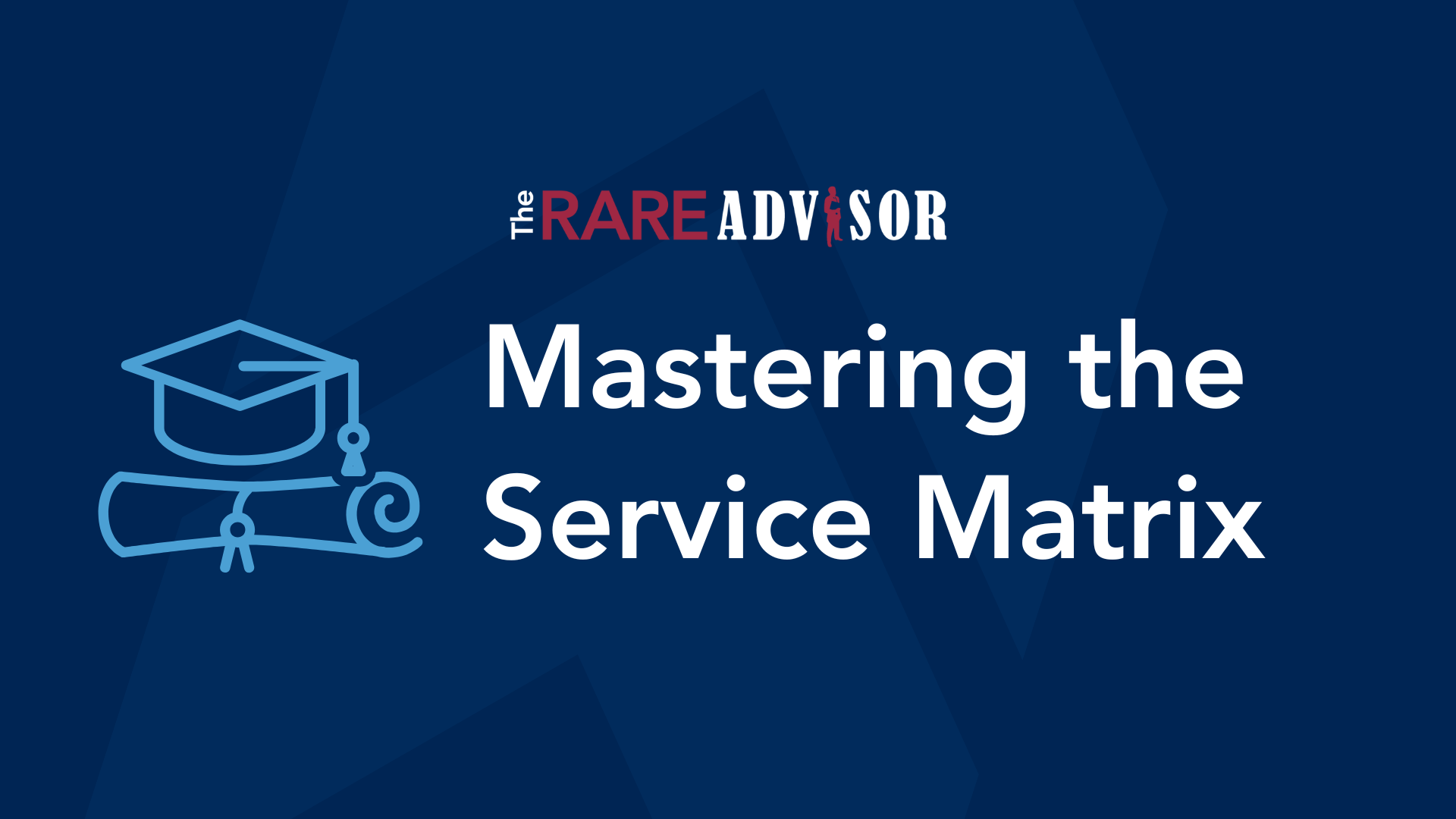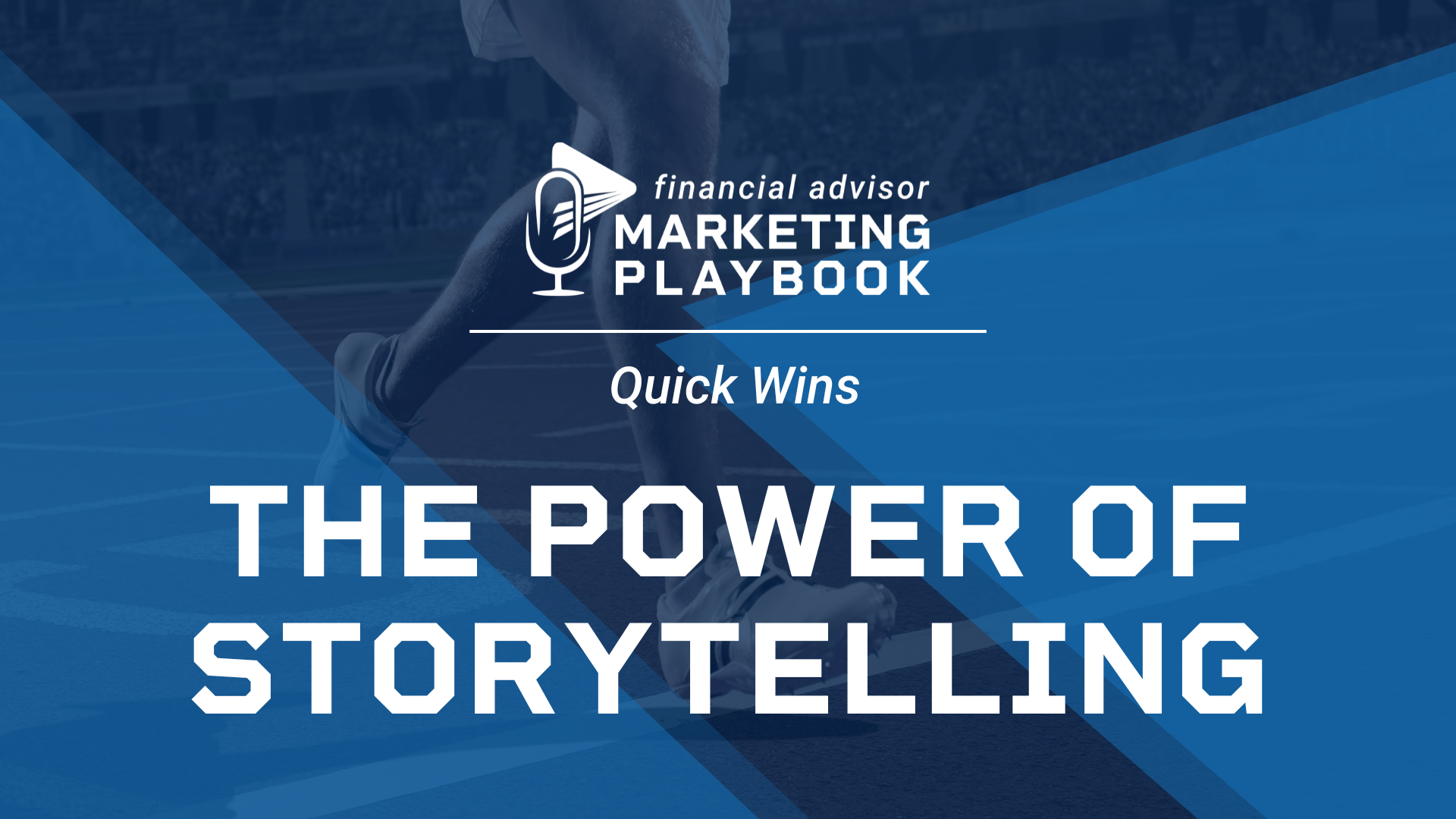The RARE Advisor: 2 Quick Ways to Calculate Your Valuation

You should be doing this every single quarter. It’s the equivalent of your stock price, and can help you build and grow a better practice. In this episode of The RARE Advisor, we’ll share two of the quickest ways to calculate the valuation for your firm.
There are two main ways to calculate the valuation for your financial practice. There's what I like to call the Blue Book Value, which is a very quick revenue assessment to identify your volume of revenue, how much of it is recurring revenue vs. non-recurring revenue, and then the calculation builds from there. Or, there is the more traditional kind of business appraisal approach, which is looking at an EBITDA (earnings before interest, taxes, depreciation, and amortization) valuation, which is essentially your net profit, and then taking that and having a multiple on that. But again, you have to look at the components of your business, which primarily boils down to recurring revenue and non-recurring revenue. Here's a quick calculation to give you an idea of the sampling:
Both valuations, all things being equal, are going to come out about the same if the practice is running in a traditional sense and is getting some bottom line value. Looking at what I'll just simply call the core data, we've got recurring revenue of $700,000 and a non-recurring revenue of $300,000. So, we've got a total revenue of a million dollars with 70% of it recurring and 30% of it non-recurring. Now, as a typical financial advisor, you should be bringing in about 25% to your bottom line EBITDA. Now, I realize that smaller financial practices might not be operating in this fashion, because what they're doing essentially is that the owner is taking the value out of the practice for personal income on a regular basis. And in doing so, they basically run it down to zero. So you should assume that from a business perspective, 25% of that would be getting left over at the net at the EBITDA value. And, therefore, you would have the remainder left if you want to live that way, so to speak, by taking the revenue stream off of it.
Now, there's a whole other set of discussions I've talked about numerous times before: no one wants to buy your job, but they do want to buy your business. The more your business looks and acts like a business, the more valuable it's going to be. So, if you're running it like a job, it's going to get valued like a job. If you're running it like a business, it's going to come at a higher valuation.
So, if we take these core data pieces, all we've got to do on a revenue valuation is bring up the recurring revenue ($700,000) and the non-recurring revenue ($300,000), and then the multiples on revenue. Currently, the overall average multiple is about 2.7 on recurring revenue, and 0.85 on non-recurring revenue. That totals out for a valuation of about $2.1 million on this example practice.
Now, if we look at the EBITDA, we still want to know what the percentage is of our recurring revenue and our non-recurring revenue. And then we've got that EBITDA number of the 25% we talked about. If we bring that $250,000 (25% EBITDA) over, calculated at 70%, that's going to give you a 10x multiple for $1,750,000. And then $250,000 again, but at 30% and a 5x multiple for $375,000. Total those two numbers up and you're getting, within spitting distance, the same $2.1 million valuation.
This is the quickest, most readily accurate way to calculate your valuation off of revenue and off of EBITDA. Now, if you are affiliated with USA Financial, we run your Blue book for you each quarter automatically. We're able to calculate that for you and provide it to you on a quarterly basis because we've got all that data flowing through the system.
I do believe this is something you should track. This is the equivalent of your stock price. This tells you if you're building a better business or if you're losing ground. Now also you can learn this plus a whole lot more relating to successions, mergers, acquisitions, and transitions at our Predictable Practice event. Hey, hope this helps and keep building your business.
--
The RARE Advisor is a business model supercharged by Recurring And Repeatable Events. With more than thirty years of working with and coaching successful advisors, host Mike Walters (along with other leaders in the industry), discusses what it takes to grow a successful practice. With the aim of helping financial professionals and financial advisors take their business to the next level, Mike Walters shares insights and success stories that make a real impact. Regardless of the stage of your practice, The RARE Advisor will provide thoughtful guidance, suggestions for developing systems and processes that work, and ideas for creating an authentic experience for your clients.
The RARE Advisor is also a podcast! Subscribe today via Apple Podcasts, Google Podcasts, or your preferred podcast listening service for easier on-the-go listening.
Author Info

Mike Walters is the Chief Executive Officer (CEO) of USA Financial, leading the firm since its inception in 1988. Mike is committed to...
Related Posts

Mastering the Service Matrix: Elevate Client Experience & Drive Advocacy
In this episode of The Rare Advisor, Aaron Grady and Allan Oehrlein dive deep into two essential tools for modern advisory practices: the service matrix and the stewardship framework. Discover why moving from a reactive to a proactive service model is critical for consistency, scalability, and client advocacy. Learn how these frameworks help advisors deliver predictable, high-touch experiences, segment clients effectively, and create professional contrast that sets your firm apart. If you want to elevate your client experience and build loyalty that lasts, this conversation is packed with actionable insights.

Year-End Planning with Purpose: Becoming the Advisor of the Future
In this episode of The RARE Advisor, Aaron Grady and Duncan MacPherson explore how financial advisors can approach year-end planning with intention and purpose. Rather than focusing solely on metrics and spreadsheets, they discuss the importance of aligning your “why” with your process and practice. Drawing on Japanese philosophies like Ikigai, Kaizen, Kintsugi, and Wabi Sabi, they share insights on creating a more meaningful, resilient, and sustainable business. Learn how embracing continuous improvement, authenticity, and technology can help you become the advisor of the future.

The Power of Storytelling: 3 Essential Stories Every Financial Advisor Needs
In this episode of Financial Advisor Marketing Playbook, Mark Mersman reveals how storytelling can transform your marketing and client relationships. Learn the three foundational stories every advisor needs: your origin story to build trust, your client transformation story to demonstrate results and empathy, and your philosophy story to define your beliefs and differentiate your brand. Discover practical tips for crafting these narratives and integrating them into your website, meetings, and marketing strategy.

Mastering the Service Matrix: Elevate Client Experience & Drive Advocacy
In this episode of The Rare Advisor, Aaron Grady and Allan Oehrlein dive deep into two essential tools for modern advisory practices: the service matrix and the stewardship framework. Discover why moving from a reactive to a proactive service model is critical for consistency, scalability, and client advocacy. Learn how these frameworks help advisors deliver predictable, high-touch experiences, segment clients effectively, and create professional contrast that sets your firm apart. If you want to elevate your client experience and build loyalty that lasts, this conversation is packed with actionable insights.

Year-End Planning with Purpose: Becoming the Advisor of the Future
In this episode of The RARE Advisor, Aaron Grady and Duncan MacPherson explore how financial advisors can approach year-end planning with intention and purpose. Rather than focusing solely on metrics and spreadsheets, they discuss the importance of aligning your “why” with your process and practice. Drawing on Japanese philosophies like Ikigai, Kaizen, Kintsugi, and Wabi Sabi, they share insights on creating a more meaningful, resilient, and sustainable business. Learn how embracing continuous improvement, authenticity, and technology can help you become the advisor of the future.

The Power of Storytelling: 3 Essential Stories Every Financial Advisor Needs
In this episode of Financial Advisor Marketing Playbook, Mark Mersman reveals how storytelling can transform your marketing and client relationships. Learn the three foundational stories every advisor needs: your origin story to build trust, your client transformation story to demonstrate results and empathy, and your philosophy story to define your beliefs and differentiate your brand. Discover practical tips for crafting these narratives and integrating them into your website, meetings, and marketing strategy.

